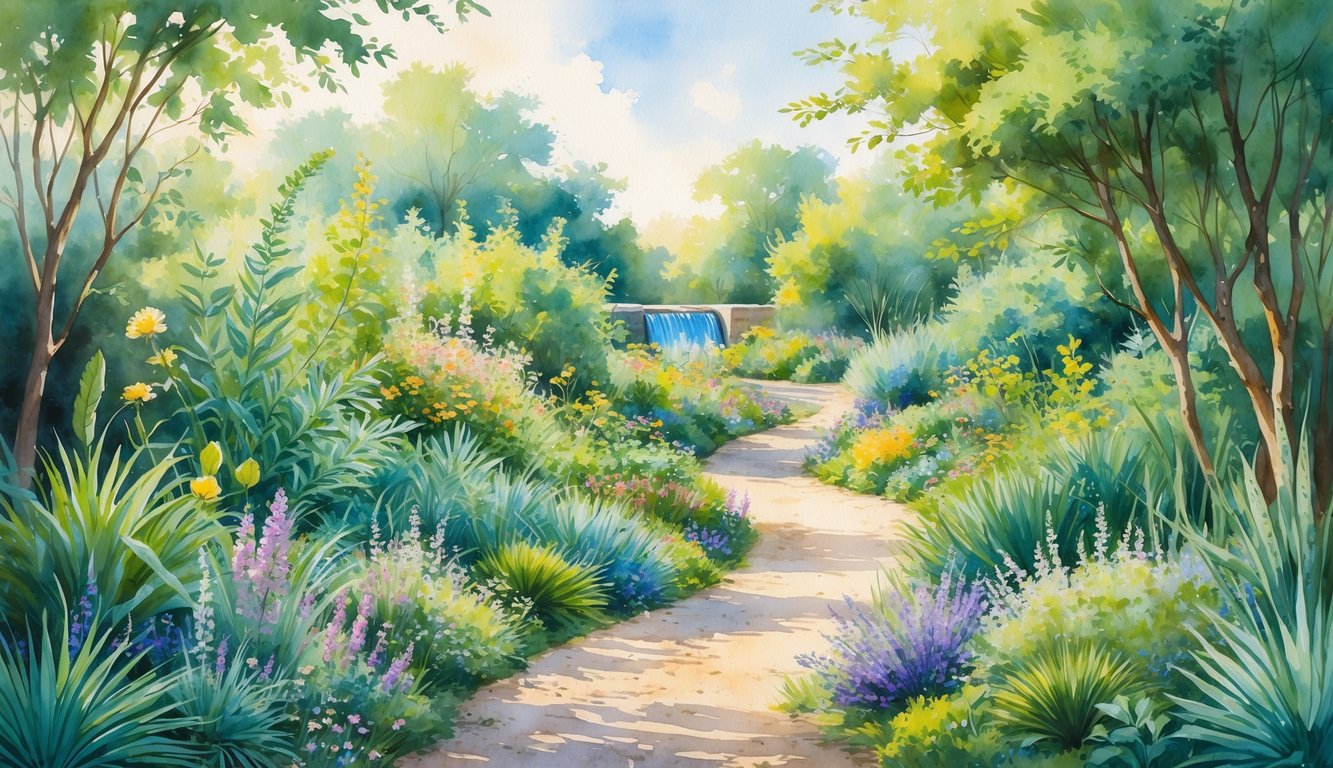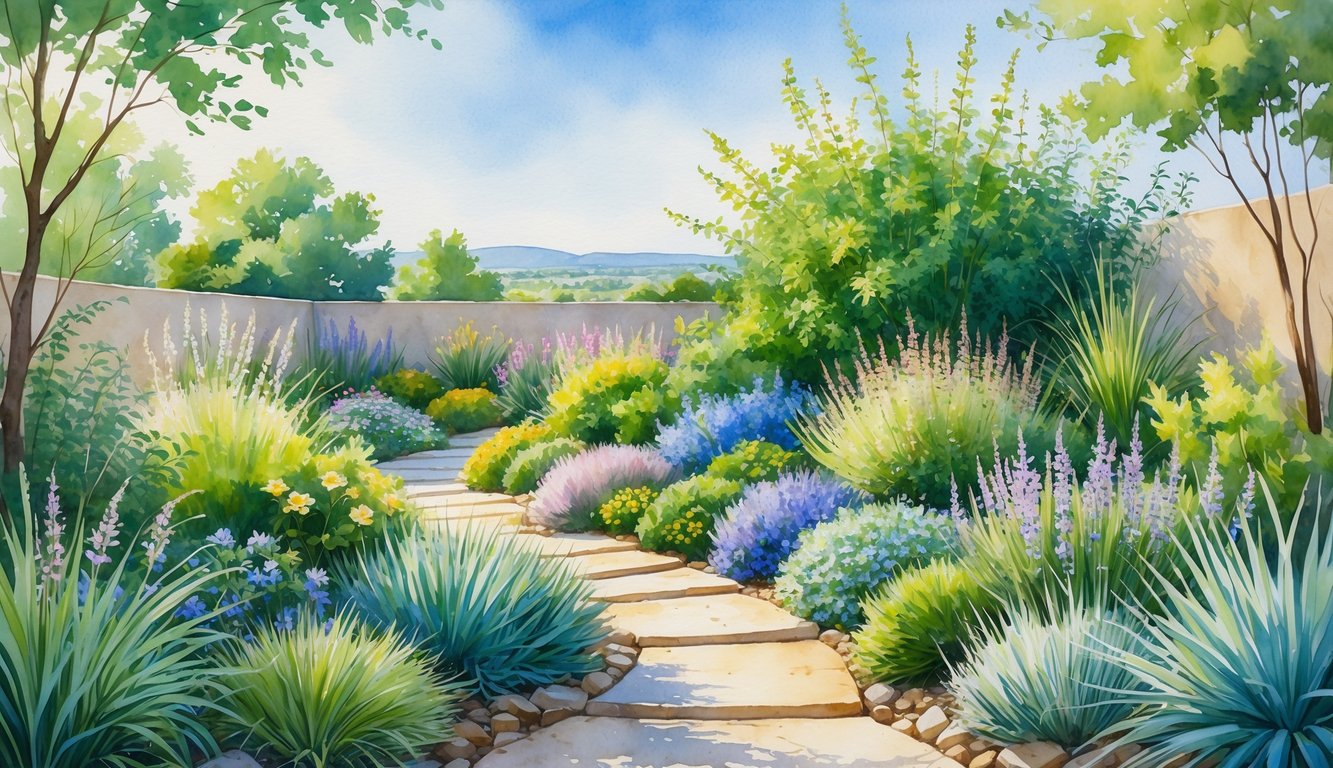
Selecting the Right Native Plants for Maximum Water Savings
Trying to pick the right native plants? My brain just melts. Everyone says something different. But if you want to water less and not stare at crispy stems all summer, you need to know which ones are actually drought-tolerant. Some plants pretend to save water, but they’re faking.
Drought-Tolerant Varieties That Thrive
People always grab anything labeled “native” and think it’s drought-proof. Nope. Local rainfall and root depth matter way more. Go for deep-rooted types like Achillea millefolium (yarrow) or Verbena bonariensis—they barely notice if it doesn’t rain for a week. Still, you’ve got to prep your soil.
Garden designers rave about Echinacea purpurea for surviving heat, though some say it’s not native everywhere. I’ve seen Stipa tenuissima (Mexican feather grass) and Salvia nemorosa bounce back after brutal heat—though, honestly, check if they’re native to your area before planting. And always cross-check native plant water use with local lists. Those tags at the store? Half the time, they’re wrong.
Choosing British Native and Regional Favorites
Latin names freak people out. I get it. But picking British natives isn’t rocket science—just look at what survives in local parks without sprinklers. Foxglove (Digitalis purpurea) and cowslip (Primula veris) always seem to make it through dry spells, while the “Mediterranean” stuff just gives up.
For water retention, Betonica officinalis and Campanula rotundifolia are solid picks—less pest drama, too. And yeah, Hedera helix (English ivy) can be annoying, but in shady corners, it barely needs a drink once it’s settled. Don’t just trust me—check local water-smart landscaping guides. People still overwater these plants, though—old habits, I guess.
Designing a Water-Saving Garden with Native Species

Nobody ever talks about root systems, but they’re the whole game—natives save water and cut down on work. Some bog and pond natives are weirdly good for tricky spots, especially in random city yards.
Planning Your Garden Layout for Efficiency
Spacing is everything. Wish someone told me that before I killed half my plants. If you want a tough garden, figure out which spots get roasted and which stay cool. My cheap soil test last spring found clay pockets that needed way more compost and sand than I expected.
Here’s what actually helped: grouping deep-rooted natives (like Eriogonum or Mimulus) in the worst, driest spots. Native Garden Planner showed me that some bunchgrasses and taproot perennials can go weeks without water, even in July. That alone cut my watering by more than half. Ignore those “drought-tolerant” tags—always check your local lists or you’ll waste money.
Random tip: I killed off Penstemon in a soggy corner under a leaky gutter until I realized I’d mulched way too deep. Too much mulch suffocates roots. Design for the weird spots in your yard, or you’ll just keep replanting forever.
Integrating Bog and Pond Plants
Okay, so apparently half my friends are convinced that putting in a bog just hoses your water bill. I have no idea where they get this stuff, but honestly, if you go with native bog plants, it’s the opposite—almost embarrassingly obvious. One time, this ecologist I met used Carex and some local Juncus species around a retention pond. He said stormwater runoff dropped by nearly a quarter in one season. Not magic, just plants that can handle the weird, up-and-down water levels. Don’t just grab whatever “wetland” thing is on clearance at the garden center. I did that—bought water lilies because the label looked pretty. Algae everywhere. Twice. Total mess.
Swapped them out for Sagittaria and Pickerelweed—those are actual nutrient hogs. They shade the pond, don’t need fertilizer, and suddenly there were frogs and damselflies everywhere. I threw a bog strip along the fence and wildlife basically threw a party. Also, the roots from these natives lock up the soil way better than any of those plastic liners or weed mats (which, by the way, are a joke—don’t waste your cash).
Fun fact: one patch of native sedge actually kept the area around my pond from drying out so fast. I barely had to top up the water. Oh, and if you’ve got a community college nearby? Sometimes they’ll hand out free starter plugs if you bring in a sketch. Cut my costs by a third at least. Just wish someone had told me rush leaves are sharp as knives—seriously, wear gloves.